Transform your operations with our ultimate guide to business automation. Learn how AI can move your business from repetitive tasks to strategic innovation, boosting efficiency, cutting costs, and driving growth. Discover key strategies and tools.
Your Ultimate Guide to Business Automation: From Repetitive Tasks to Strategic Innovation with AI
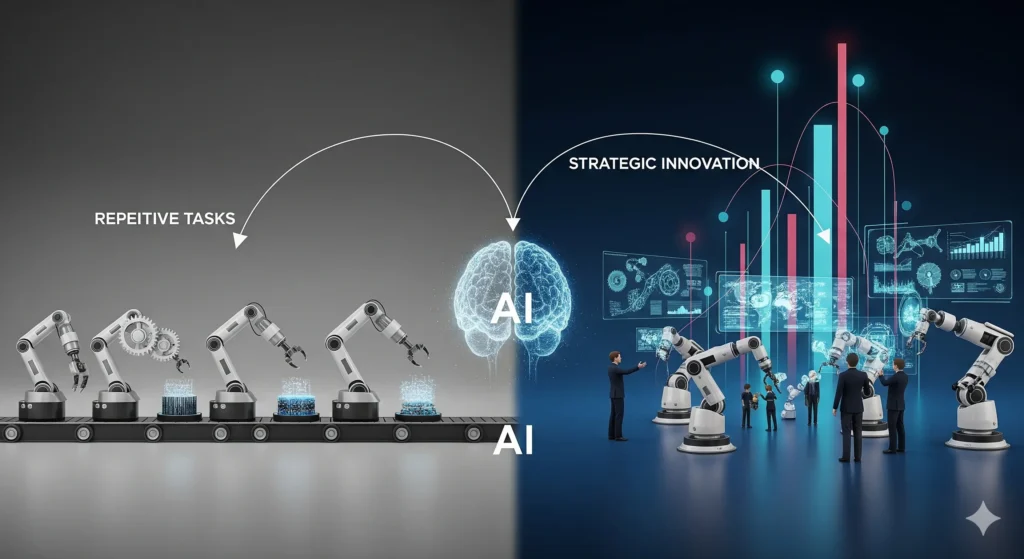
In today’s fast-paced business landscape, the call for business automation is louder than ever. It’s no longer just a buzzword; it’s a strategic imperative for companies across the USA aiming for sustained growth and competitive advantage. At its core, process automation is about leveraging technology to perform tasks that were once done manually, thereby freeing up human capital for more complex, creative, and strategic endeavors. When we integrate AI for business, automation evolves from simple task replication to intelligent, adaptive systems capable of driving significant operational efficiency and fostering true innovation.
This guide to automation will walk you through the journey of transforming your business operations. We’ll explore how AI automation can revolutionize everything from mundane, repetitive tasks to complex decision-making, setting the stage for substantial digital transformation. Discover how automated business processes lead to reduced costs, fewer errors, and a more agile organization.
What is Business Automation and Why Does Your Business Need It?

Business automation refers to the use of technology to automate tasks and workflows, minimizing human intervention. This can range from simple, rule-based tasks to complex, data-driven decisions. The “why” is even more compelling:
- Increased Efficiency: Automated tasks are completed faster and more consistently, eliminating bottlenecks.
- Cost Reduction: Fewer manual hours mean lower labor costs and reduced errors that can lead to expensive rework.
- Improved Accuracy: Machines make fewer mistakes than humans, ensuring higher quality outputs.
- Enhanced Employee Satisfaction: Employees are freed from tedious work, allowing them to focus on engaging, high-value activities.
- Scalability: Automated processes can easily scale up or down with business demand without proportionate increases in human resources.
- Data-Driven Insights: Automation often generates valuable data, which, when analyzed by AI for business, can provide insights for strategic decision-making.
The Evolution of Automation: From Basic RPA to Intelligent AI-Driven Automation
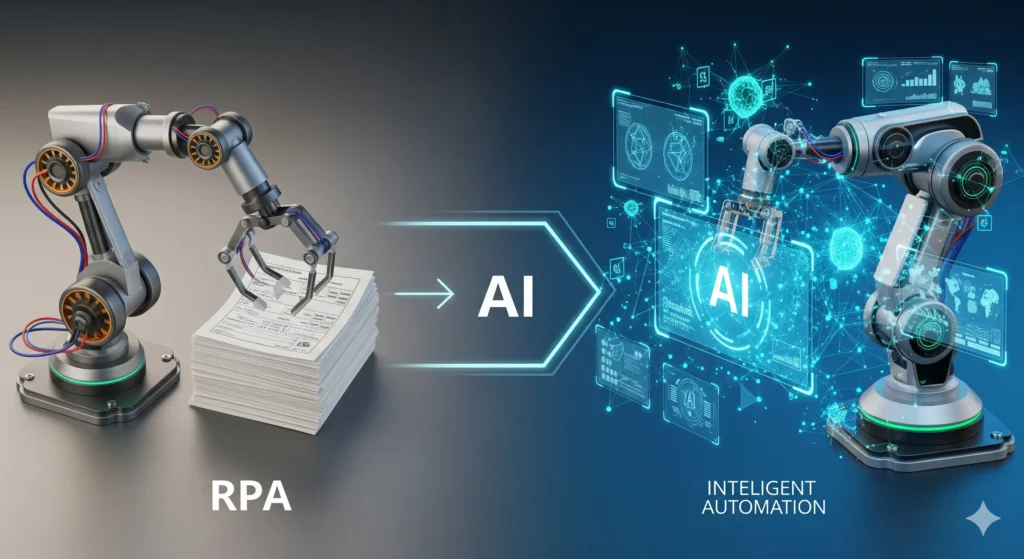
Historically, process automation started with Robotic Process Automation (RPA), where software robots mimic human actions to complete repetitive, rule-based tasks (like data entry or form processing). While incredibly effective for certain use cases, RPA has limitations when tasks involve variability or require cognitive abilities.
This is where AI automation comes into play. By integrating Artificial Intelligence, automation transcends simple rule-following. AI brings capabilities like:
- Machine Learning (ML): Systems learn from data to make predictions or decisions without explicit programming.
- Natural Language Processing (NLP): Enables machines to understand, interpret, and generate human language, perfect for chatbots and document analysis.
- Computer Vision: Allows machines to “see” and interpret visual information, useful for quality control or security.
This combination creates AI-driven automation, leading to more intelligent, adaptive, and strategic solutions.
Key Areas for Business Automation with AI
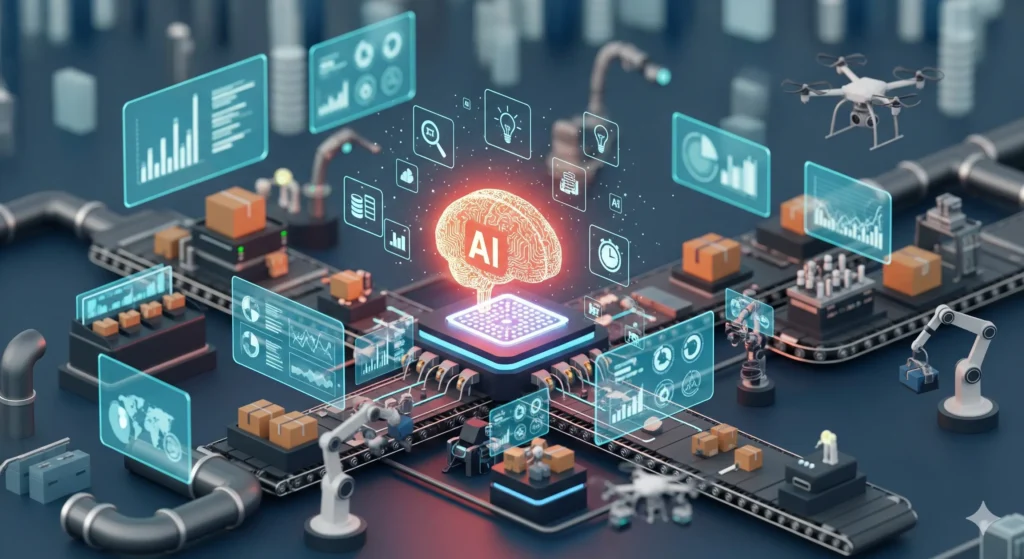
Where can your business best apply AI automation? Here are critical areas demonstrating the power of workflow automation and AI working hand-in-hand:
1. Customer Service & Support
- Repetitive Tasks: Answering FAQs, providing order status updates, routing customer inquiries.
- AI Enhancement: AI-powered chatbots and virtual assistants can handle complex conversations, personalize interactions, and even resolve issues autonomously. NLP allows them to understand nuanced customer requests, significantly improving response times and satisfaction.
- Strategic Innovation: Freeing human agents to focus on high-value problem-solving and building stronger customer relationships.
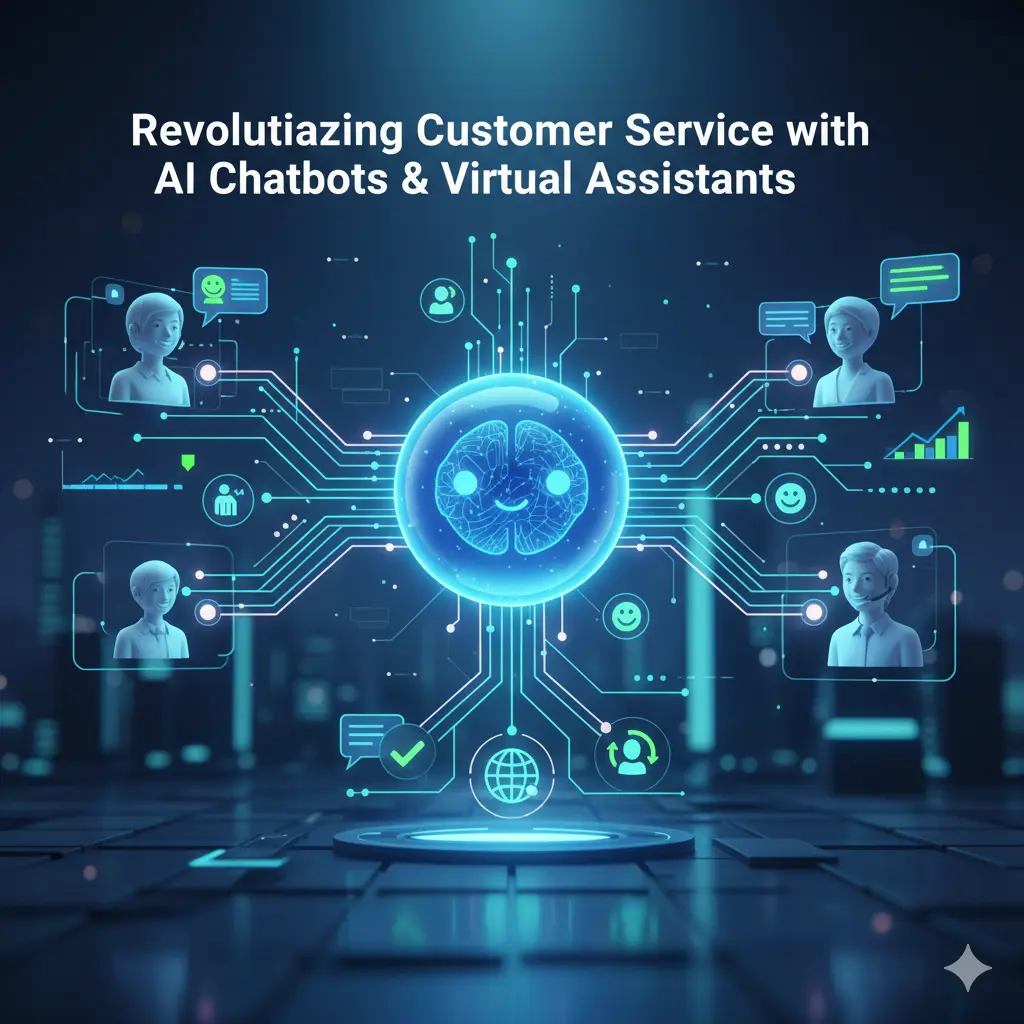
2. Sales & Marketing
Strategic Innovation: Enabling marketing and sales teams to create highly targeted strategies, improve conversion rates, and develop deeper customer understanding.
Repetitive Tasks: Lead qualification, email outreach, social media scheduling, data entry into CRM.
AI Enhancement: AI can personalize marketing campaigns, analyze customer behavior for predictive sales insights, automate content generation (e.g., ad copy variations), and optimize ad spend in real-time.
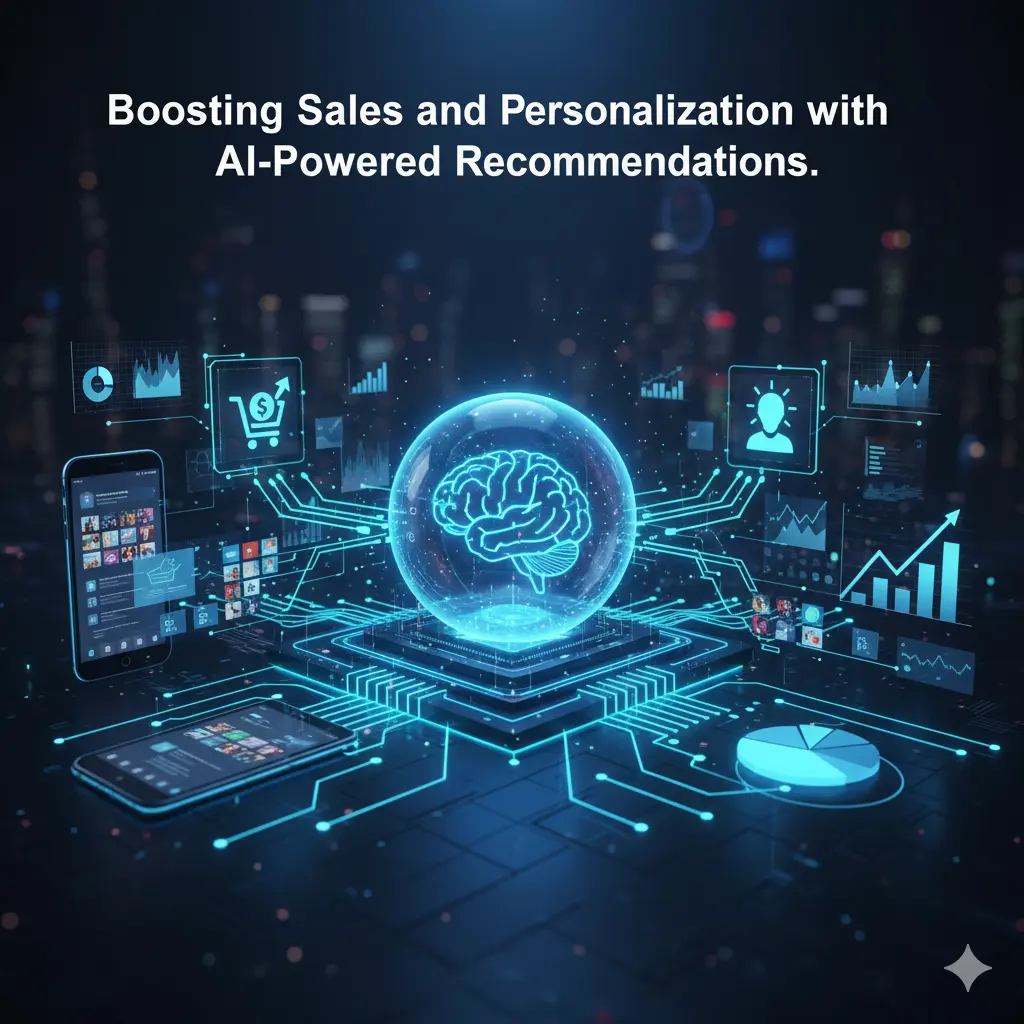
3. Finance & Accounting
- Repetitive Tasks: Invoice processing, expense reporting, reconciliation, data extraction from financial documents.
- AI Enhancement: AI-powered solutions can automate accounts payable/receivable, detect fraud patterns, and provide advanced financial forecasting. ML algorithms can identify discrepancies with greater accuracy than human review.
- Strategic Innovation: Transforming finance departments from data processors to strategic advisors, offering insights into profitability and risk management.
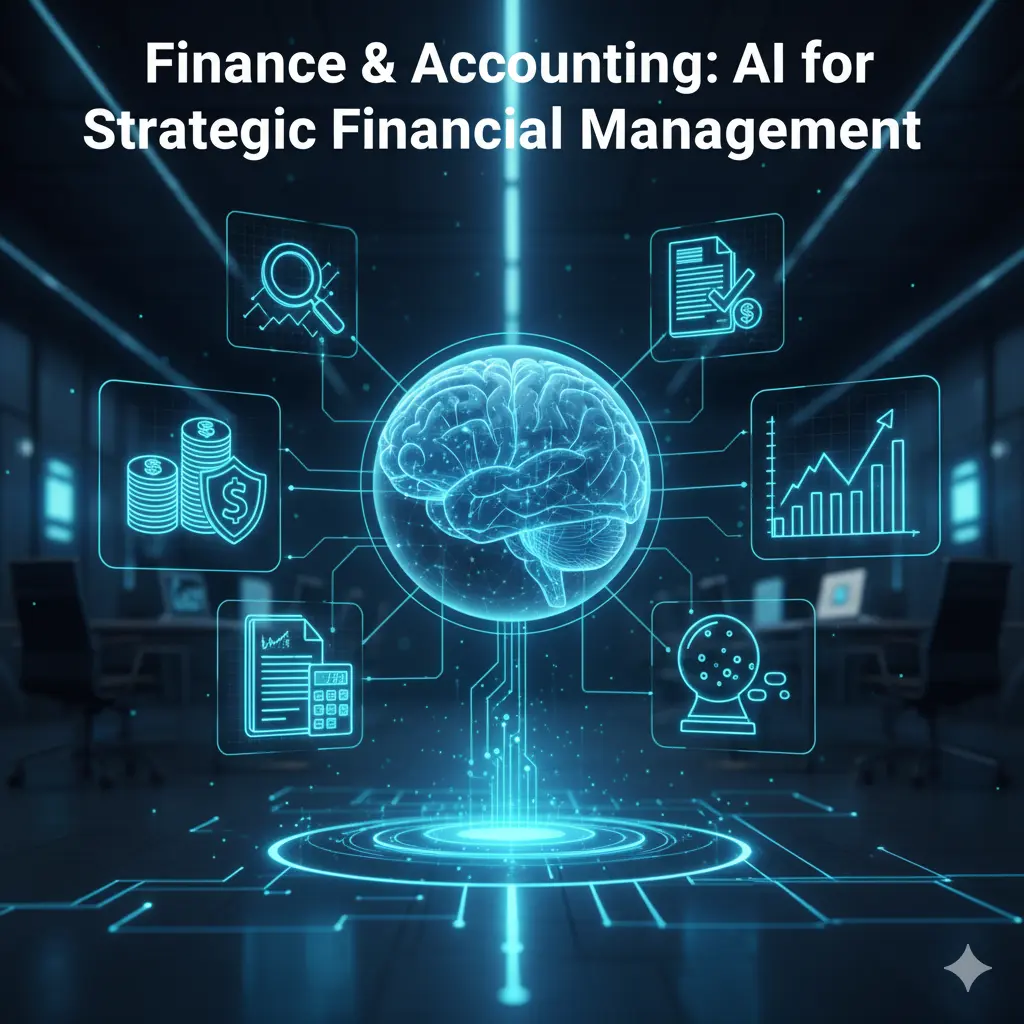
5. Supply Chain & Logistics
Strategic Innovation: Creating a resilient, highly efficient, and cost-effective supply chain that can adapt to changing market conditions.
Repetitive Tasks: Inventory tracking, order processing, route planning, demand forecasting.
AI Enhancement: AI and ML algorithms optimize inventory levels, predict demand fluctuations with high accuracy, optimize delivery routes in real-time considering traffic and weather, and identify potential supply chain disruptions before they occur.
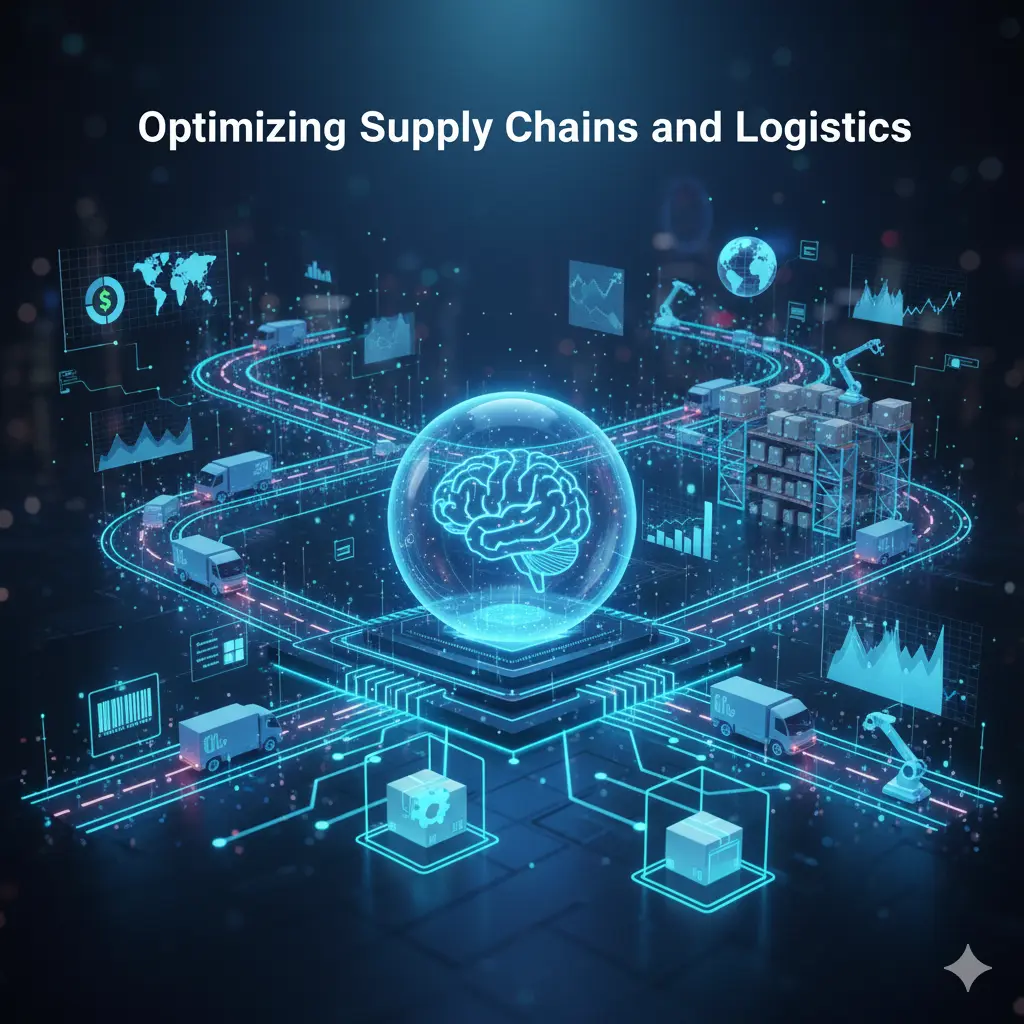
6. IT Operations
Strategic Innovation: Empowering IT teams to shift from reactive firefighting to proactive management and strategic technology implementation.
Repetitive Tasks: Monitoring system performance, executing routine maintenance scripts, managing user access, handling basic support tickets.
AI Enhancement: AI-driven tools can perform “AIOps” – intelligently analyzing IT data to predict outages, automate incident response, and proactively manage infrastructure. This moves beyond simple alerts to intelligent problem-solving.

Implementing Business Automation: A Step-by-Step Guide

Embarking on your automation journey requires a structured approach. This guide to automation recommends the following steps:
- Identify Bottlenecks & Repetitive Tasks: Start by auditing your current processes. Which tasks are time-consuming, prone to human error, or highly repetitive? Focus on high-volume, low-complexity tasks first for quick wins.
- Define Clear Objectives: What do you hope to achieve? Reduce costs, improve accuracy, free up employee time, enhance customer satisfaction? Specific, measurable goals are crucial.
- Choose the Right Tools: Evaluate business automation software, including RPA platforms, AI/ML solutions, and specialized workflow automation tools. Consider scalability, integration capabilities, and ease of use.
- Pilot Program: Start with a small, contained project to test the chosen solution and gather feedback. This minimizes risk and allows for adjustments.
- Scale Strategically: Once successful, gradually expand automated business processes to other areas. Continuously monitor performance and refine your automations.
- Train Your Team: Ensure your employees understand the new automated processes and how to interact with the new systems. Emphasize that automation is about augmenting human capabilities, not replacing them.
- Embrace Continuous Improvement: Automation is an ongoing journey. Regularly review your automated processes for further optimization and leverage new advancements in AI-driven automation.
The Future is Automated: Strategic Innovation with AI

The transition from manual, repetitive tasks to strategic automation powered by AI is not just about efficiency; it’s about reshaping the very fabric of how businesses operate. Companies that embrace AI for business are not only reducing costs and improving accuracy but are also unlocking new levels of innovation and agility. By understanding and implementing automated business processes, your organization can stay ahead in the competitive US market, foster a more engaged workforce, and focus on truly strategic initiatives that drive long-term success.
Start your digital transformation journey today by identifying where business automation can make the most impact for you.
